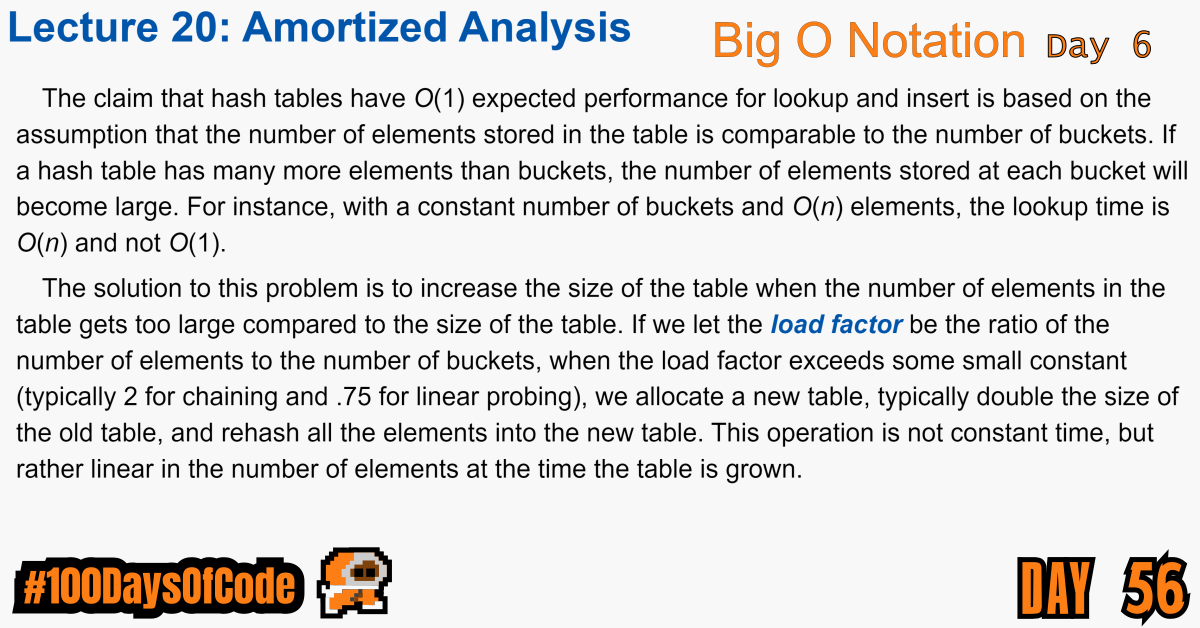Even though, it’s not easy I think I am starting to understand Amortized Analysis. Like all great lessons, it started with a Wikipedia search. The results were surprisingly straightforward. The only missing component was the breakdown of the formulas used in each method for calculating amortized time.
TLDR;
Okay, so here are the highlights of what I did: KV
- Read through some articles in Wikipedia and some lecture notes on Amortized Analysis. I am getting closer to understanding the concept. The book “Cracking the Coding Interview” by Gayle L. McDowell, introduced the topic but the formal methods were not elaborated on clearly enough for me to properly understand what I’m missing. One set of lecture notes covered the topic a bit more in depth but I got lost at calculating the average time (a.k.a. Amortized time… I think?) for a particular function. Overall, I’m progressing but slowly.
- I learned that you can set virtual machines to run with different operating systems and processors. So now I have a solution that will allow me to continue with the assembly code book I started. I have been looking into the different Linux distros to see which one I should try. I have only ever used Ubuntu so I am excited thinking about it. Not sure what sets them apart yet.
Notes on Amortized Time
Ammortize (verb)
- To gradually write off the initial cost of (an asset) over a period. For example, “the vessel’s owners could not amortize her high capital costs.”
- Reduce or pay off (a debt) with regular payments. For example, “eighty per cent of the proceeds has been used to amortize the public debt”
Amortized analysis
Still haven’t written these notes, but they are on the way soon… I hope.
References
Conclusion
That’s all for today. If you are interested in the MIT course you can check out the video lecture I’m currently going through. The lecture is helpful but isn’t sufficient by itself. Anyways, until next time PEACE!
